Intel Haswell-EP Xeon 14 Core Review: E5-2695 V3 and E5-2697 V3
by Ian Cutress on November 20, 2014 10:00 AM ESTProfessional Performance: Windows
Agisoft Photoscan – 2D to 3D Image Manipulation: link
Agisoft Photoscan creates 3D models from 2D images, a process which is very computationally expensive. The algorithm is split into four distinct phases, and different phases of the model reconstruction require either fast memory, fast IPC, more cores, or even OpenCL compute devices to hand. Agisoft supplied us with a special version of the software to script the process, where we take 50 images of a stately home and convert it into a medium quality model. This benchmark typically takes around 15-20 minutes on a high end PC on the CPU alone, with GPUs reducing the time.
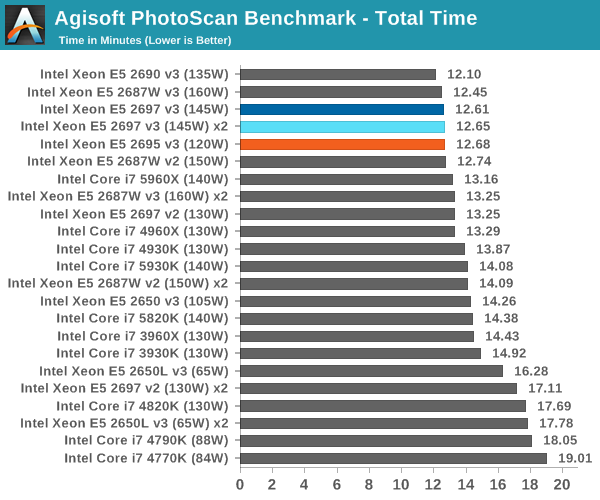
Cinebench R15
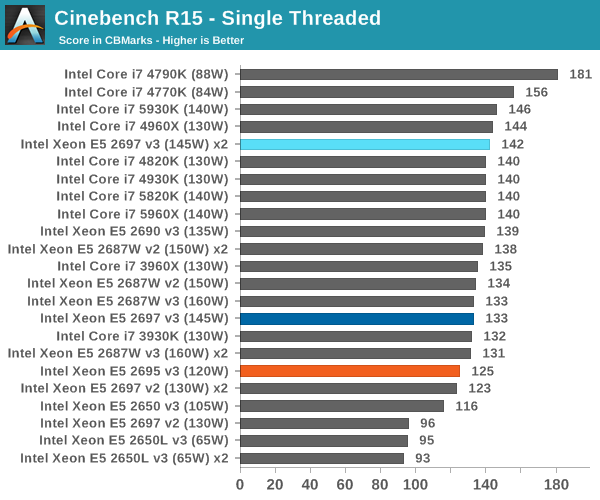
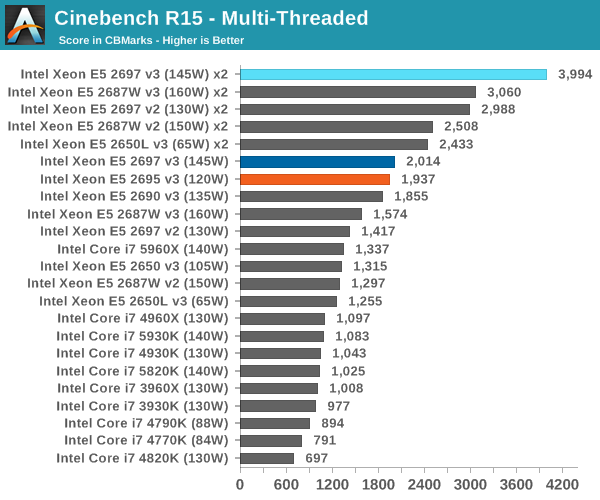
Professional Performance: Linux
Built around several freely available benchmarks for Linux, Linux-Bench is a project spearheaded by Patrick at ServeTheHome to streamline about a dozen of these tests in a single neat package run via a set of three commands using an Ubuntu 14.04 LiveCD. These tests include fluid dynamics used by NASA, ray-tracing, molecular modeling, and a scalable data structure server for web deployments. We run Linux-Bench and have chosen to report a select few of the tests that rely on CPU and DRAM speed.
C-Ray: link
C-Ray is a simple ray-tracing program that focuses almost exclusively on processor performance rather than DRAM access. The test in Linux-Bench renders a heavy complex scene offering a large scalable scenario.
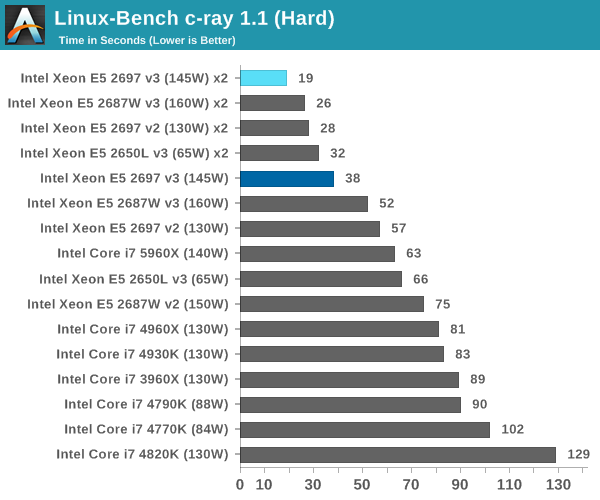
NAMD, Scalable Molecular Dynamics: link
Developed by the Theoretical and Computational Biophysics Group at the University of Illinois at Urbana-Champaign, NAMD is a set of parallel molecular dynamics codes for extreme parallelization up to and beyond 200,000 cores. The reference paper detailing NAMD has over 4000 citations, and our testing runs a small simulation where the calculation steps per unit time is the output vector.
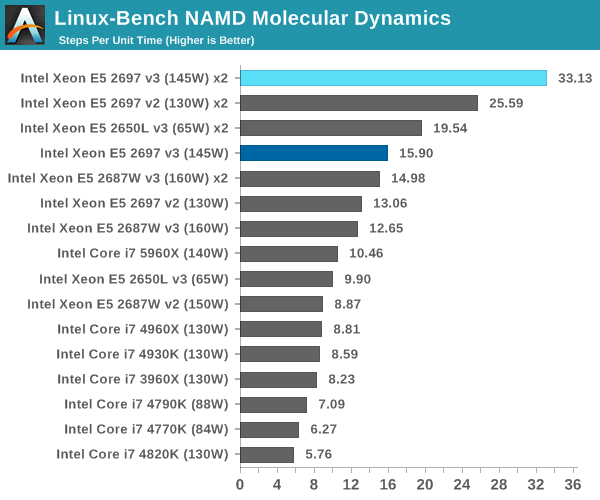
NPB, Fluid Dynamics: link
Aside from LINPACK, there are many other ways to benchmark supercomputers in terms of how effective they are for various types of mathematical processes. The NAS Parallel Benchmarks (NPB) are a set of small programs originally designed for NASA to test their supercomputers in terms of fluid dynamics simulations, useful for airflow reactions and design.
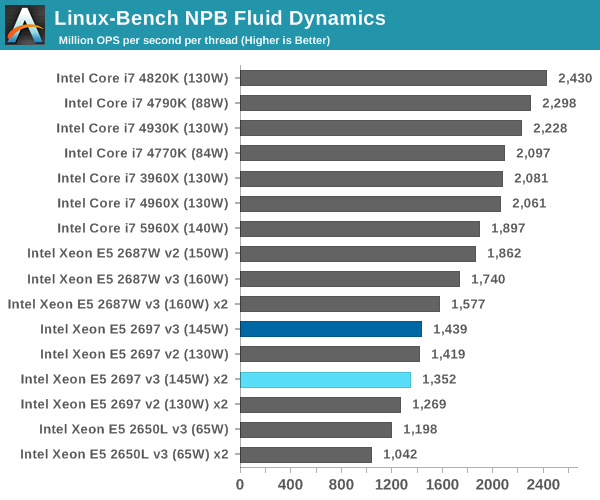
Redis: link
Many of the online applications rely on key-value caches and data structure servers to operate. Redis is an open-source, scalable web technology with a strong developer base, but also relies heavily on memory bandwidth.
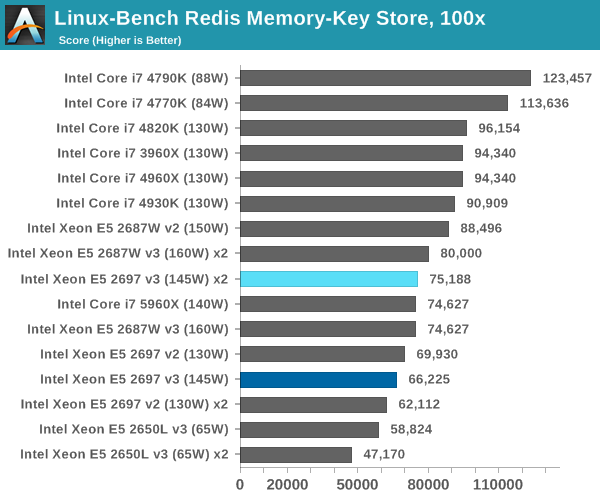
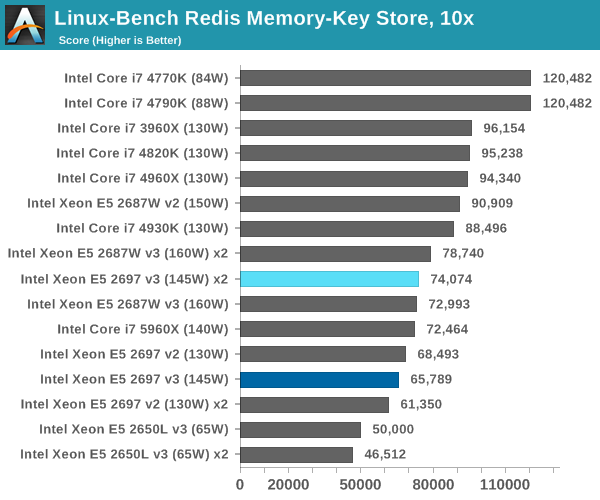
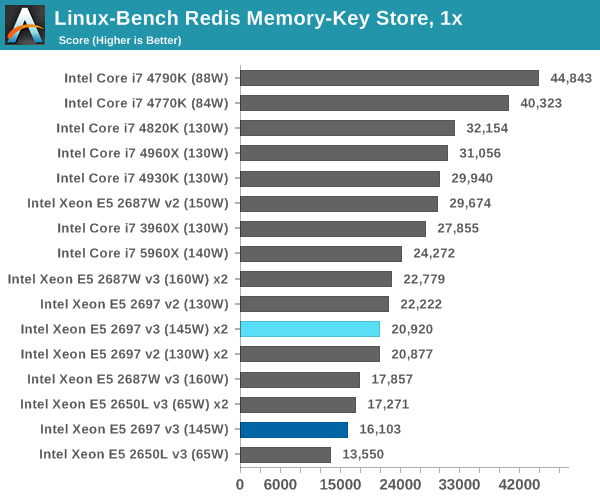










44 Comments
View All Comments
mapesdhs - Friday, November 21, 2014 - link
Small point for C-ray: the benchmark home page URL is at my sgidepot site, not
on the Blinkenlights site, because the latter is just a mirror (and it's down atm,
hence why it should not be used as the home URL for any of my pages, ie. I have
no control over the Blinkenlights site).
Ian.
cynic783 - Friday, November 21, 2014 - link
What is going on at Anand. Why are they doing desktop tests on a server?What happened to the server benchmarks, e.g. SQL, VM, etc.
WGAF about browser and gaming benchmarks on a datacenter server? Seriously.
romrunning - Friday, November 21, 2014 - link
I agree. No database benchmarks and especially no VM benchmarks make this a sad review.This is especially egregious when you add in useless web browsing tests. No one who is looking at this class of processor is really worried about web browsing on it.
deontologist - Friday, November 21, 2014 - link
Looks like when Anand left he took half the intellect away from the team ... This is a piss poor review ... Where are my separate idle/load power usage data? Why are you guys benching games? Ffs this site has gone done the tubes with slow reviews and on top of that useless reviews. Anand must be so proud of you kids.androticus - Saturday, November 22, 2014 - link
Don't you people have editors? I understand not all authors are native English speakers, but sheesh at least get someone to edit before publication.linuxnizer - Saturday, November 22, 2014 - link
Sever class CPU but many many gaming and video benchmarks!!!! Seriously ?!!No enterprise class tests!
Like DB tests / VM tests / Java EE tests / web tests with thousands of hits per second.
HollyDOL - Saturday, November 22, 2014 - link
I have to agree... as a server cpu review those benchmarks are kind of useless.Anybody here who would buy $4000 cpu to play games (...most of which epically suck at utilizing 4 cores properly)? For gaming that cpu has to suck anyway since it's not it's purpose.
It's seriously missing server usage tests... web hosting, heavy db and vm, ldap, sap, encryption etc. etc. - it was said here many times over.
Jurgen_modeling - Sunday, November 23, 2014 - link
Dear Ian,Thank you very much for posting this 14-core review. Could you please confirm that the 2697 v3 even under full (100%), continuous load (e.g. over >6 h) has a steady-state frequency of 3.1 GHz and does not clock down to 2.6 GHz as suggested by the base frequency of the processor?
I noticed that in your 12-core review, the same thing happened with base frequencies being below the steady-state frequencies.
http://www.anandtech.com/show/8679/intel-haswellep...
The same thing seems to have happened here for the 10-core CPUs.
http://www.anandtech.com/show/8584/intel-xeon-e5-2...
Even the 18-core model seems to have a base clock frequency of around 2.6 GHz and not 2.3 as suggested by the processor label.
http://www.anandtech.com/show/8730/intel-haswellep...
If possible, I would love to see a 2-D version of the two frequency response profiles which you published on the last site of this 14-core review. 3D is much harder to read out data.
Thank you & Kind regards
Juergen
Jurgen_modeling - Sunday, November 23, 2014 - link
Another comment re gaming benchmarks and Xeon v3: These just hurt my heart. The 2P and 4P Xeon server market is already only relevant for a very specific market of people. If anyone buys a Xeon v3 server and plans to game on this CPU, I don't think any review can save such a high-end Xeon-gaming enthusiast. (-:Cheers, Juergen
daxomni - Monday, November 24, 2014 - link
Why isn't anyone from the staff responding to the glaring omissions and repeated complaints? What's the point of having a comments section if the staff couldn't care less what the readers are actually looking for in a server review? This article reads like something you'd do during garbage time on a Friday afternoon for a weekend release, not as a core review of expensive hardware on a strict schedule.